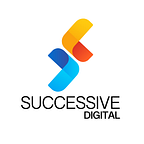4 Approaches to Modernize Your Legacy Applications
Change is inevitable in the modern world of technology. Legacy applications often hold back organizations to innovation and efficiency. Once robust and reliable, these applications can hinder progress due to their outdated architectures and inability to integrate seamlessly with modern technologies. Recognizing this challenge, organizations increasingly turn to legacy application modernization services to transform their software infrastructure and find new growth opportunities. Understanding the various approaches to modernizing legacy applications is essential, especially within cloud technology. This blog will cover four well-known approaches to consider while upgrading legacy applications.
How are Legacy Applications Impacting Businesses?
Legacy applications are not compatible with continuously changing technologies. Let’s find out how legacy applications impact the current business environment.
- Limited Scalability
Legacy applications must often scale to meet changing business requirements and expansion objectives. This can significantly impede business growth.
- Low Security
Legacy applications may be vulnerable to cyber-attacks due to old technologies or a failure to address this issue during development.
- Incompatibility with new technologies
Most legacy applications are incompatible with current technologies and software, which makes integrating them with other systems problematic.
- Higher Maintenance Cost
Legacy applications can be expensive to support, mainly because they require specialists who can work with outdated technologies.
4 Approaches to Modernize Your Legacy Applications
Replatforming:
The famous ‘lift and shift’ method is similar to providing your legacy apps with a new region in the cloud. It is a quick and practical approach to modernizing applications by capitalizing on cloud platforms’ scalability and agility. By migrating legacy systems to the cloud, developers can eliminate the need to manage on-premises hardware, lower maintenance costs, and improve accessibility.
Refactoring:
This approach redesigns coding to increase performance scalability. This strategy allows developers to upgrade legacy systems by breaking monolithic designs into microservices or containerized components. Cloud offerings play a key role in accelerating the modernization process. Organizations can achieve higher agility and resilience in their software infrastructure by adopting cloud-native technologies like Kubernetes and Docker.
Rebuilding:
It is rewriting legacy applications with modern programming languages, frameworks, and architectures. This approach allows enterprises to avoid technical debt, adopt advanced technology, and create solutions that meet current business requirements. Businesses can utilize managed services and infrastructure-as-code to accelerate development and improve delivery cycles using cloud platforms such as Amazon Web Services (AWS), or Google Cloud Platform (GCP).
Replacing:
There are cases where replacing legacy applications with off-the-shelf software or software-as-a-service (SaaS) solutions can be the most viable option for modernization. It allows organizations to adopt industry-standard solutions tailored to their specific needs. It ensures developers don’t come across the overhead of maintaining custom-built systems. Furthermore, by leveraging cloud-based SaaS offerings, developers can minimize upfront costs, reduce deployment times, focus on delivering value to end-users, and significantly improve business performance.
Conclusion
As technology advances and the world goes digital, modernizing legacy applications is essential for organizations. Leveraging the cloud and its offerings is necessary to achieve successful outcomes in modernization initiatives, whether through re-platforming, refactoring, rebuilding, rehosting, or replacing. Embracing these approaches will enable us to drive positive organizational transformation and deliver more excellent value to our stakeholders. A reliable legacy application modernization company can help you modernize your applications and grab new opportunities from the modern business environment.
